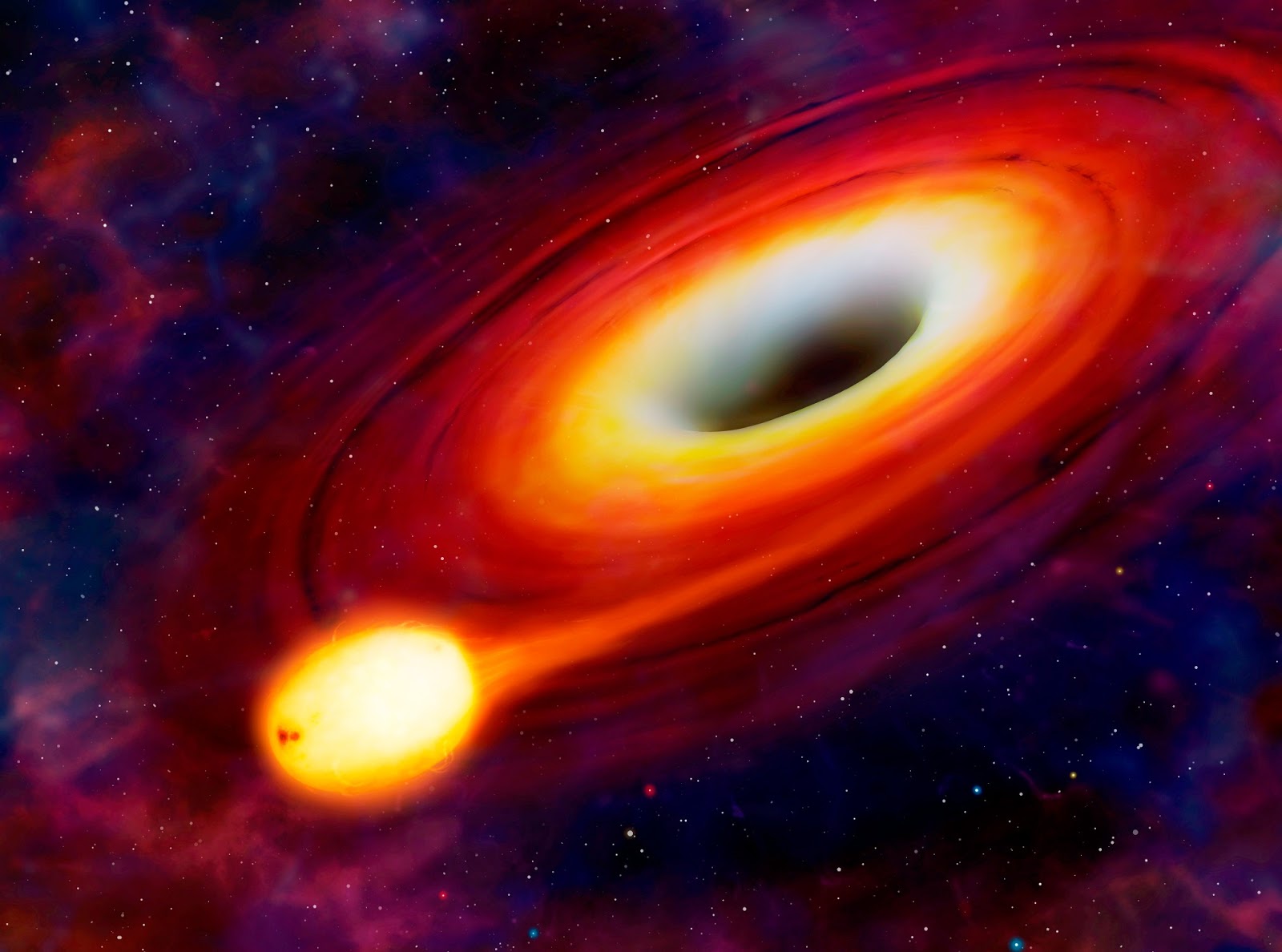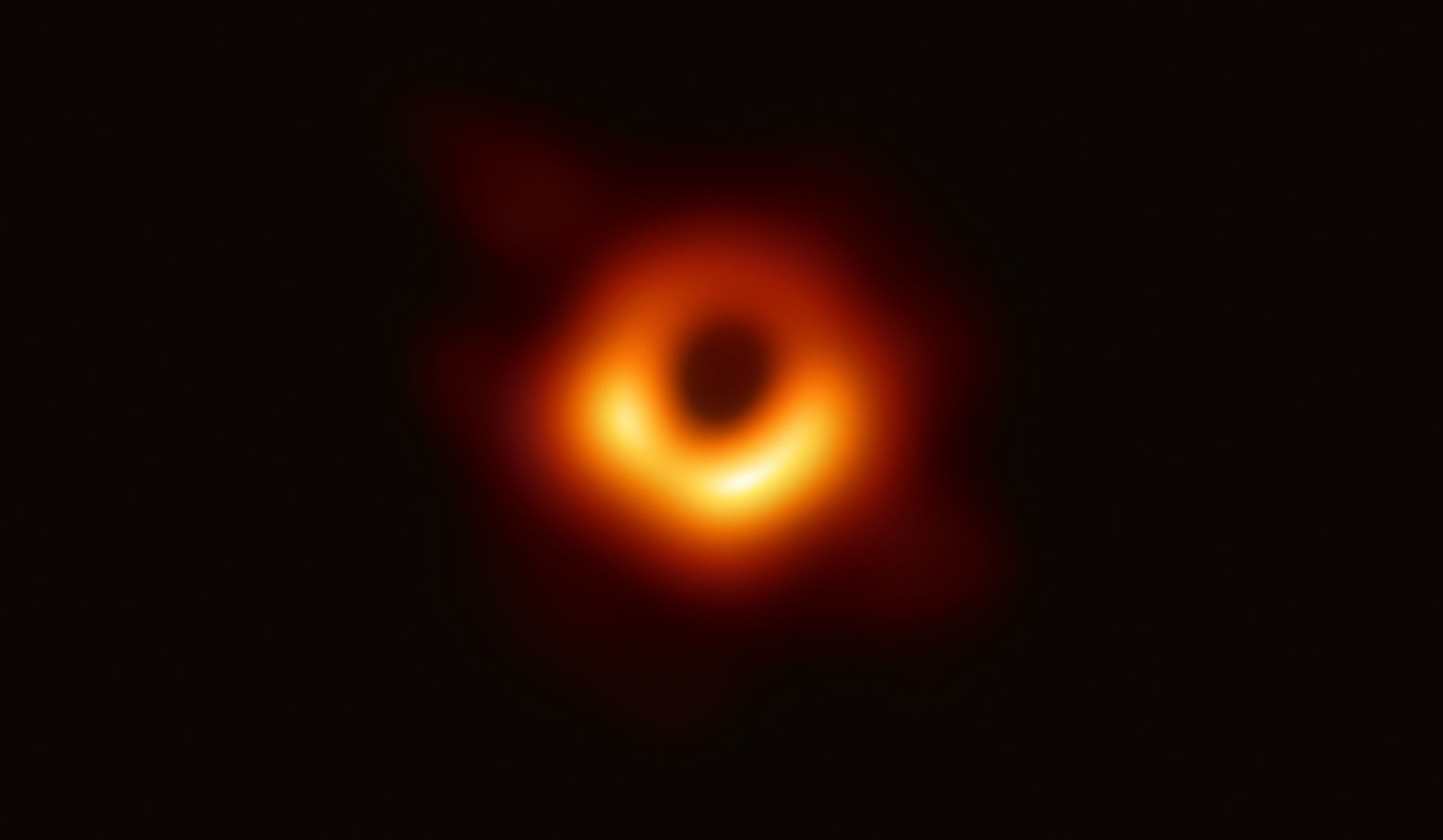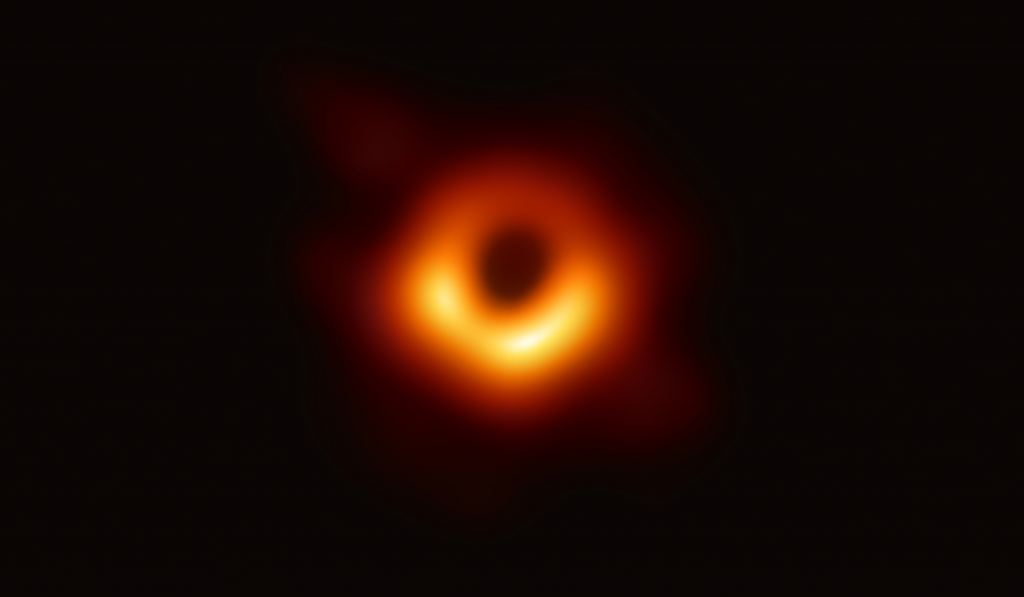
The EHT's image of a black hole in M87 (released in 2019) was an extraordinary effort, requiring two years of research even after the images were taken. Although the black hole remains unseen, these powerful jets can be viewed from great distances. Bright jets of material traveling at near-relativistic speeds are created. Sometimes, as matter is drawn toward a black hole, it ricochets off the event horizon and is hurled outward, rather than being tugged into the maw. What is the biggest thing in the universe? What happens at the center of a black hole? But supermassive black holes, lying in the center of a galaxy, may become shrouded by the thick dust and gas around them, which can block the telltale emissions. Instead, astronomers must rely on detecting the radiation black holes emit as dust and gas are drawn into the dense creatures. Scientists can't see black holes the way they can see stars and other objects in space. The inner region of a black hole, where the object's mass lies, is known as its singularity, the single point in space-time where the mass of the black hole is concentrated. Gravity is constant across the event horizon.

Once a particle crosses the event horizon, it cannot leave.

The event horizon of a black hole is the boundary around the mouth of the black hole, past which light cannot escape. (Image credit: EHT Collaboration) (opens in new tab) What do black holes look like?īlack holes have three "layers": the outer and inner event horizon, and the singularity. Polarization is a signature of magnetic fields and the image makes it clear that the black hole's ring is magnetized.įollowing the release of the first image of a black hole in 2019, astronomers captured a new polarized view of the black hole. As polarized light waves have a different orientation and brightness compared to unpolarized light, the new image shows the black hole in even more detail. In 2021, astronomers revealed a new view of the giant black hole at the center of M87, showing what the colossal structure looks like in polarized light. It also opens up a whole new area of research in black holes, now that astronomers know what a black hole looks like. The image maps the sudden loss of photons (particles of light). The EHT saw the black hole in the center of galaxy M87 while the telescope was examining the event horizon or the area past which nothing can escape from a black hole. In 2019 the Event Horizon Telescope (EHT) collaboration released the first image ever recorded of a black hole. (Image credit: EHT Collaboration) (opens in new tab) The Event Horizon Telescope, a planet-scale array of eight ground-based radio telescopes forged through international collaboration, captured this image of the supermassive black hole in the center of the galaxy M87 and its shadow. Related: How many black holes are there in the universe? Black hole images Not only does the black hole candidate reside in the constellation Monoceros ("the unicorn"), its incredibly low mass - about three times that of the sun - makes it nearly one of a kind. The closest black hole to Earth is dubbed " The Unicorn" and is situated approximately 1,500 light-years away.

Though detecting black holes is a difficult task and estimates from NASA (opens in new tab) suggest there could be as many as 10 million to a billion stellar black holes in the Milky Way. Since the Milky Way contains over 100 billion stats, our home galaxy must harbor some 100 million black holes. (Image credit: NASA/UMass/D.Wang et al., IR: NASA/STScI) (opens in new tab)Īccording to the Space Telescope Science Institute (opens in new tab) (STScI) approximately one out of every thousand stars is massive enough to become a black hole. At the center of the Milky Way lies a supermassive black hole Sagittarius A* (Sgr A*).


 0 kommentar(er)
0 kommentar(er)
